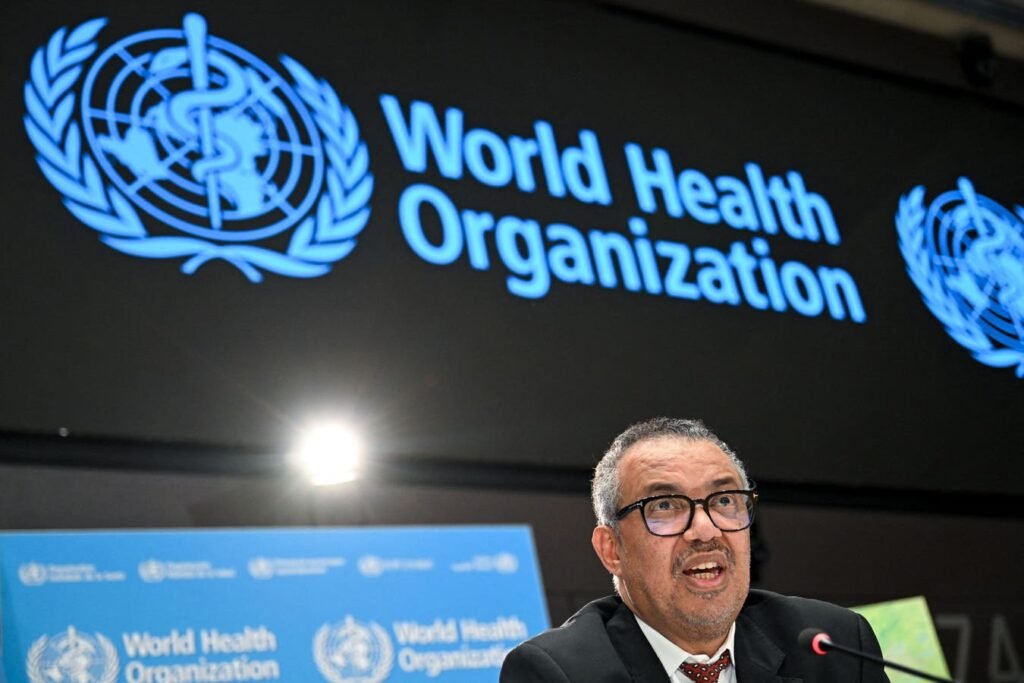World Health Organization (WHO) chief Tedros Adhanom Ghebreyesus looks on during a press conference … More
During the annual meeting of the World Health Organization in Geneva, concerns were raised about the potential impact of the organization’s budget crisis. The possibility of program cuts leading to increased disease burden and deaths globally was discussed by officials and delegates.
The primary source of the financial challenges is the decision of the United States, under President Trump, to withdraw its longstanding funding from the WHO and other global health initiatives. This includes entities like the U.S. Agency for International Development, established 64 years ago.
In January, Trump signed an executive order initiating the process of U.S. withdrawal from the WHO. This move significantly hampers the organization’s ability to fulfill its global public health mandate, given the crucial role the U.S. has played in funding. Throughout the WHO’s 77-year history, the U.S. has been its largest sponsor, contributing $1.2 billion in 2023. For the budget cycle ending in 2025, the U.S. donated $958 million, accounting for nearly 15% of the WHO’s budget. Under U.S. law, a one-year notice period is required for withdrawal, and financial obligations must be met for 2025. Consequently, the U.S. is set to formally exit the WHO in 2026, prompting a 20% reduction in the organization’s 2026–2027 budget to $4.2 billion.
China is poised to become the largest funder of the WHO, stepping in to fill the void left by the U.S. with a $500 million contribution. This is a significant increase from their previous donation of $39 million.
As the WHO faces financial constraints, member contributions are being raised by 20%. Efforts are underway to bridge the funding gap, with the organization securing over $170 million in new commitments from various countries and organizations. Companies like Novo Nordisk are also making substantial pledges, with the philanthropy foundation committing nearly $58 million.
The WHO, a specialized agency of the United Nations, plays a critical role in international public health. It coordinates with 194 member states on a range of public health initiatives, including disease management, vaccination campaigns, and emergency response. International cooperation facilitated by the WHO is essential for addressing pandemics and other global health threats.
Since its establishment in 1948, the WHO has spearheaded numerous life-saving programs. Notably, the organization led a global immunization campaign that culminated in the eradication of smallpox in 1980. The WHO Essential Medicines List, updated biennially since 1977, serves as a vital resource for nations in medication procurement. Essential medicines are intended to be universally accessible in healthcare systems.
The WHO’s coordination of rapid response efforts, medical research sharing, and intelligence dissemination is unparalleled. This includes critical work during Ebola outbreaks, measles epidemics, and influenza surveillance for vaccine development. The organization’s efforts extend to combating HIV, malaria, tuberculosis, and neglected tropical diseases that disproportionately affect marginalized populations.
The WHO’s roadmap for neglected tropical diseases emphasizes public-private partnerships, treatment distribution, and research funding. Progress in disease prevention and treatment could be jeopardized by budget cuts.
The U.S.’s withdrawal from the WHO, initiated without explicit Congressional approval, has raised legal concerns. Despite opposition from some lawmakers citing the organization’s alleged shortcomings, the Trump administration is moving forward with the exit plan. This shift in global health leadership opens the door for China to influence health policy on a global scale.


